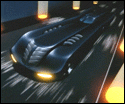|
Sagebrush posted:You are thinking of the ATLAS-I electromagnetic pulse testing facility, which simulated the EMP effect of a nuclear blast on aircraft systems without having to set off a nuclear weapon. You can just bombard trained wood, like a surfboard or a guitar, with elf soundwaves and it just gets harder and harder too. Hardness is subjective too, like once something is hard itís hard but then thereís also qualities to that, like it can appear to be harder or stronger in different ways. (USER WAS PUT ON PROBATION FOR THIS POST)
|
|
|
|

|
| # ? Jun 3, 2024 13:42 |
|
If you're interested in learning a little bit more about EMP machines, there's a Library of Congress about one that used to be in Maryland. After shutdown, parts were repurposed into a similar machine in Tennessee at Arnold AFB. https://www.loc.gov/pictures/item/md1450/
|
|
|
|
ClamdestineBoyster posted:Hardness is subjective too, like once something is hard itís hard but then thereís also qualities to that, like it can appear to be harder or stronger in different ways. Rockwell scale, famously subjective.
|
|
|
|
Xakura posted:
Beve Stuscemi fucked around with this message at 16:54 on May 27, 2020 |
|
|
|
ClamdestineBoyster posted:You can just bombard trained wood, like a surfboard or a guitar, with elf soundwaves and it just gets harder and harder too.
|
|
|
|
Azhais posted:The pilots don't have control other than very minor course corrections during docking and the tray beneath the screens flip down and there are physical controls there in case of screen malfunction. The other thing to consider is that your arms are weightless when you're not under thrust, so presumably you're only using those controls in microgravity. It would be a big issue if they had to actually fly the drat thing while it's under thrust to orbit though because your arms probably weigh six or seven times what they normally do.
|
|
|
|
Sagebrush posted:You are thinking of the ATLAS-I electromagnetic pulse testing facility, which simulated the EMP effect of a nuclear blast on aircraft systems without having to set off a nuclear weapon. Thank you for this! I do some material science overlap work (technically I'm in mechanics, but with my specific projects there's plenty of overlap) on polymers, and this is fascinating! I'm tempted to send it to the chemist on the project and ask how he feels about working with radiation. Should be good for a laugh, anyway.
|
|
|
|
Aramoro posted:It's from Battletech, there's a faction called the Word of Blake. There are also a race of sentient birds, the only actual aliens in the Battletech universe. The birds are really dumb and serious business Battletech players hate them. So goons being goons when it came to Mechwarrior online would open matches shouting 'Squawk' in chat which pissed people off endlessnessly. A 'Squawk' in chat indicated something really dumb was about to happen in your game involving goons. It was hilarious. Man those were good times. I wish I still had time for online video games.
|
|
|
|
Cartoon Man posted:This morning I learned what a concrete burn is. Oh, so that's what happened to me when my dad told me to just mix the concrete for the shower with my hands. The more you know.
|
|
|
|
The thing with touchscreens is that the shuttle and Apollo had chunky push buttons and toggle switches. If you needed to hit one, you could rest your hand on the panel to make sure you're getting the right one. You can't do that with a touchscreen. Reminds me of when one of my friends bought a keyboard that was pretty much a big touch pad. It was cool to do gestures with it, but he said you couldn't type on it like normal, because there was no physical feedback, and putting your finger on the surface meant you were hitting the key that was there.
|
|
|
|
Did the shuttle crew do anything manually during launch? I thought it was all computers/ground control as well.
|
|
|
|
`Nemesis posted:Did the shuttle crew do anything manually during launch? I thought it was all computers/ground control as well. They did need to turn on some equipment in the proper order and confirm the data control was receiving.
|
|
|
|
Cojawfee posted:The thing with touchscreens is that the shuttle and Apollo had chunky push buttons and toggle switches. If you needed to hit one, you could rest your hand on the panel to make sure you're getting the right one. You can't do that with a touchscreen. Reminds me of when one of my friends bought a keyboard that was pretty much a big touch pad. It was cool to do gestures with it, but he said you couldn't type on it like normal, because there was no physical feedback, and putting your finger on the surface meant you were hitting the key that was there. Yeah, I agree. Most touchscreen interfaces have a "bounding box" for each button and if you drag your finger outside of the bounding box the button activation is ignored so at least there's a way to cancel a touch. It's not intuitive though and without training the operator they're unlikely to make that logical leap. I think the only way to really handle those kinds of operations is to provide physical switches or a combination of pressure-sensitivity with haptic vibration feedback. The haptic center button on the iPhone 8 feels exactly like a button would so someone could in theory design a UI entirely from that and have it reconfigure dynamically like a touchscreen. Since it's pressure-sensitive it detects when I'm actually pressing it. Touchscreens are great for creating approachable easy UIs but in safety-critical systems you have to do a lot of work to make sure that anything that can kill or injure someone requires at least one level of additional confirmation beyond a button press. And to be fair you have to do that on a traditional UI too. Palming/multitouch also adds a level of complexity to detecting intent beyond a physical button because you can't dynamically place guards on a touch panel. So you're down to doing that in software. It's fine if you can design the UI around that, but the design considerations are different versus a traditional UI. They're also a big net win for clean-ability and ingress protection as there aren't any crevices. Also it's a big sheet of tempered or chemically-strengthened glass so it's not going to break unless you punch it. So there are a lot of good things about touchscreens. Edit: Honestly the biggest issue I see with that UI is that the touch buttons are too small. The Human Factors and Ergonomics Design handbook specifies minimum sizes for touchscreen buttons, and it's best to have touch areas that are approximately twice as large. People have parallax issues with small touchbuttons, especially vertically. Also having them that close together substantially increases the risk of a mis-touch. Sex Skeleton fucked around with this message at 17:22 on May 27, 2020 |
|
|
|
There was the Apollo 12 incident where they needed to switch SCE to Aux after a lightning strike to get things back to normal. If something goofs up during launch, I wouldn't want to have to precisely hit a touchscreen.
|
|
|
|
Imagining something going wrong during reentry and having to attempt manual control with a touchscreen at mach 25
|
|
|
|
Sagebrush posted:You are thinking of the ATLAS-I electromagnetic pulse testing facility, which simulated the EMP effect of a nuclear blast on aircraft systems without having to set off a nuclear weapon. If you like weird materials you should check out Pykrete, which is officially described as a frozen ice alloy. It's basically wood pulp mixed into ice in a specific ratio that made a really strong and slow melting substance. Why would make such a thing you might ask? Well in WW2 the UK had a lot of issue getting air patrols over the Atlantic, air craft just didn't have the range to cover it from land bases and current carriers were too small and too vulnerable to u-boats. So Geoffrey Pyke thought to himself what if aircraft carrier was huge, like an iceberg. Obviously you can't just use ice, that make no sense it would melt and it's too fragile to make an aircraft carrier out of ice. So Geoffrey invented Pykecrete and mix of water and wood pulp that when frozen became bullet proof, perfect! Now obviously the Navy wasn't insane enough to just sign off on some rando making ships out of ice and needed a demonstration so in a meeting involving Churchill and Roosevelt , Lord Mountbatten who was well on board with this scheme dumped a block of Pykrete on a table, pulled out his gun and shot it. The bullet harmless bounced off into the leg of Admiral Ernest King (The commander in chief of the US fleet). That was all the proof they needed and they set about building a 1000 ton test ship in Canada and amazingly it worked. It floated, it didn't melt too quickly ideal. The original plan was to build the Habakkuk, a 600m long boat out of this stuff, with a 40 ft thick hull. For context that's twice the size of the Gerald R. Ford Aircraft carrier. Ultimately the plan never got going, Canada was confident they could build it but between funding issues and advancements in aircraft technology it became obsolete before it was ever built.
|
|
|
|
McSpanky posted:Imagining something going wrong during reentry and having to attempt manual control with a touchscreen at mach 25 Iíve had an iPhone since gen 1 and I still canít type for poo poo on it while sitting still. Canít imagine doing it during reentry or something. Hopefully they at least made their gloves work on capacitive surfaces, or the shaking will be a moot point.
|
|
|
|
The gloves work on touch screens and there are a set of physical buttons underneath the screens for vital functions.
|
|
|
|
TTerrible posted:The gloves work on touch screens and there are a set of physical buttons underneath the screens for vital functions. You mean some effort and thought might have gone into the design? No, impossible.
|
|
|
|
ClamdestineBoyster posted:You can just bombard trained wood, like a surfboard or a guitar, with elf soundwaves and it just gets harder and harder too. Hardness is subjective too, like once something is hard itís hard but then thereís also qualities to that, like it can appear to be harder or stronger in different ways. The downside of this, of course, is that too much radiation depolymerizes the wood fibers so you'd need to have strong QA controls on absorbed dose, I imagine.
|
|
|
Sex Skeleton posted:
Having worked in software development and done a shitload of direct customer support, one critically overlooked element of software UI design is that there is a surprising variance in how individuals perceive the very interface itself. A couple decades back, I read an interesting paper (that I can't find now) which concluded that a big issue with getting older users more computer savvy was that many did not conceptualize what was on the screen as being changeable. Not saying I agree with that specific assessment, but it does point towards something that isn't really an issue with most physical interfaces. When I look at a toggle switch, I understand that it is a switch and know very much what a switch does, as does most any functioning adult. But when it is just pixels on a screen, the crazy variance in how individual designers can create a button or a switch means that you can put a switch on the screen and no matter how obvious you and everyone on the team thinks it is, an unfamiliar user might just sit and stare at it without understanding that it can even be switched. A long time ago, I was part of a one-way mirror usability test where a developer got physically angry when a fresh user was unable to perform a simple task which was done by clicking one of the largest buttons on the UI. The user stared at the screen, moved the mouse a bunch, clicked on some incorrect things, but couldn't figure it out. This was something basic like "please look up a person in the database" and they never clicked the giant button with a magnifying glass and a person. The phrase My job now involves phone training and troubleshooting of a specialized piece of software, and when I'm walking someone through something, it isn't unusual to have to specify multiple ways to find something before finding one that clicks. For some users, it's describing the icon, for some it's color, for some it's relational location, etc. It really hammers home that no matter how well designed or intuitive you think something is, it's gonna trip up people just by its very nature.
|
|
|
|
|
Sagebrush posted:Lockwood This is awesome, thanks.
|
|
|
|
As often as I try to walk my mom through something on the phone, she cannot "see" anything above the address bar, aka where the tabs live. So it's doing everything one website at a time, with her closing Chrome completely to open a new site.
|
|
|
|
I'm seeing something similar in the application I'm developing automated testing for. The developers are using Angular which can skin controls in infinite ways. In practice the checkbox on one page looks and is built one way, but a checkbox on a dialog looks completely different. In addition, the base controls that Angular uses to accomplish "this is a checkbox" can be entirely different, too, which fucks with the automation. I wish I were around when the app was being designed, so I could push for more standardization which would make the user experience smoother, but I'm stuck doing catch up.
|
|
|
|
Whew the two astronauts can now die another day.
|
|
|
|
Azathoth posted:Having worked in software development and done a shitload of direct customer support, one critically overlooked element of software UI design is that there is a surprising variance in how individuals perceive the very interface itself. I'd like to think that spacecraft HMI designers could work to a symbol standard
|
|
|
|
Allen-Bradley touchscreen machine controls go to sleep and you have to touch the screen to wake it back up. It also registers this touch as a button press on whatever would have been on the screen before it woke up.
|
|
|
|
From the schadenfreude thread.Basticle posted:https://cdn.discordapp.com/attachments/317446131586170880/715024132068081684/516516.mp4
|
|
|
|
tactlessbastard posted:Allen-Bradley touchscreen machine controls go to sleep and you have to touch the screen to wake it back up. It also registers this touch as a button press on whatever would have been on the screen before it woke up. I love their pitch of a superior design and local support when they're talking up their screen compared to one from automation direct at 1/4 the price and then they do poo poo like this.
|
|
|
|
SpaceX should have put in a teletype controlling a command line interface. I'm only half joking.
|
|
|
|
They should really just have a dog onboard that will bite the pilots if they try to touch anything on the scren
|
|
|
|
https://i.imgur.com/hUn9T1N.mp4
|
|
|
|
Darlie Man?
|
|
|
|
https://www.youtube.com/watch?v=IWtOkO-UmuU BattleMaster fucked around with this message at 04:20 on May 28, 2020 |
|
|
|
https://i.imgur.com/lSUnpXq.mp4
|
|
|
|
tactlessbastard posted:Allen-Bradley touchscreen machine controls go to sleep and you have to touch the screen to wake it back up. It also registers this touch as a button press on whatever would have been on the screen before it woke up. You can disable that in the settings, assuming it's a PanelView
|
|
|
|
Piss Meridian posted:I'd like to think that spacecraft HMI designers could work to a symbol standard I would also think that astronauts are going to get training on how to work the HMI rather than just relying on it being intuitive.
|
|
|
|
You'd think so, but this is an Elon Musk operation. We're talking about a guy who walked through the Tesla factory one time and ordered all the floor safety signage painted over gray because he hates the color yellow.
|
|
|
|
Y'all are describing the interface as if the pilots get no training at all and as if there's any world where they could do something in the event of a problem at 8g For the things they'll actually use it for it's not that bad!
|
|
|
|

|
| # ? Jun 3, 2024 13:42 |
|
Log082 posted:Thank you for this! I do some material science overlap work (technically I'm in mechanics, but with my specific projects there's plenty of overlap) on polymers, and this is fascinating! I'm tempted to send it to the chemist on the project and ask how he feels about working with radiation. Should be good for a laugh, anyway. Making lockwood with gamma - sure, neutron - no way. I haven't yet read the article but I'm 99.9% sure it used the gamma component, sodium has a way too high neutron cross-section.
|
|
|
















 for shown injuries....
for shown injuries....



































